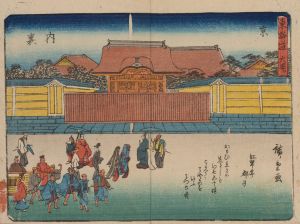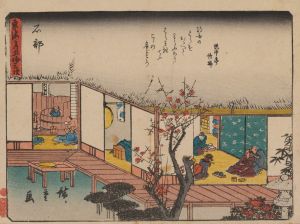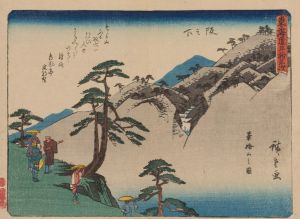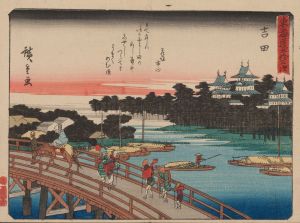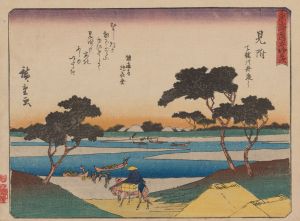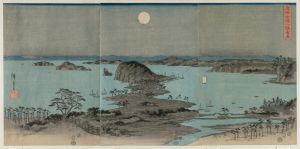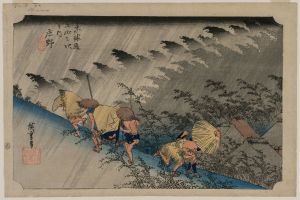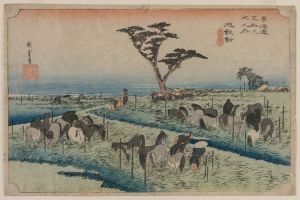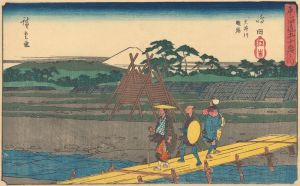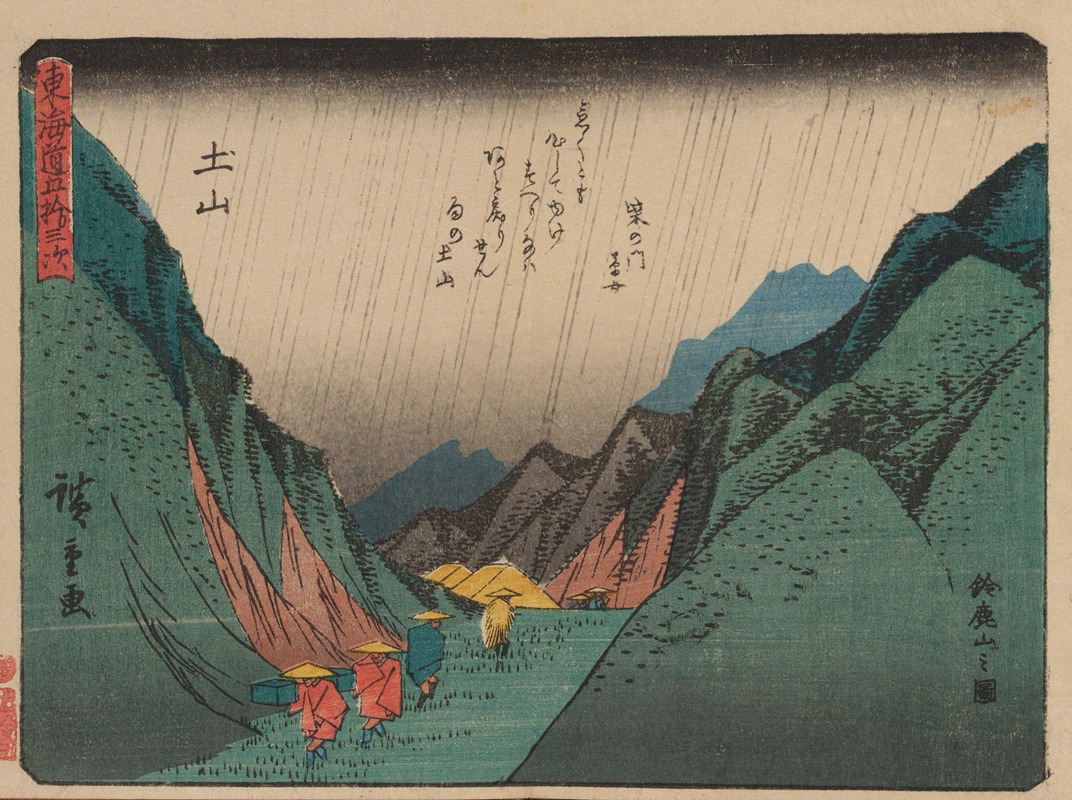
Tokaido gojusantsugi, Pl.50
A hand-painted replica of Andō Hiroshige’s masterpiece Tokaido gojusantsugi, Pl.50, meticulously crafted by professional artists to capture the true essence of the original. Each piece is created with museum-quality canvas and rare mineral pigments, carefully painted by experienced artists with delicate brushstrokes and rich, layered colors to perfectly recreate the texture of the original artwork. Unlike machine-printed reproductions, this hand-painted version brings the painting to life, infused with the artist’s emotions and skill in every stroke. Whether for personal collection or home decoration, it instantly elevates the artistic atmosphere of any space.
"Tokaido gojusantsugi, Pl.50" is a woodblock print by the renowned Japanese ukiyo-e artist Andō Hiroshige. This print is part of Hiroshige's famous series "The Fifty-three Stations of the Tokaido" (Tokaido gojusantsugi), which depicts the various stations along the Tokaido road, a vital route connecting Edo (modern-day Tokyo) to Kyoto during the Edo period in Japan.
Andō Hiroshige, born in 1797 and died in 1858, was one of the last great masters of the ukiyo-e tradition. His work is celebrated for its poetic and atmospheric qualities, capturing the beauty of the Japanese landscape and the daily life of its people. The Tokaido series, created between 1833 and 1834, is among his most famous works and has been highly influential in both Japanese and Western art.
Plate 50 of the series is titled "Tsuchiyama - Spring Rain" (Tsuchiyama - Harusame). This print illustrates the Tsuchiyama station, which was the 50th of the 53 stations on the Tokaido road. The scene is characterized by its depiction of travelers braving a heavy spring rain, a common occurrence in the region. Hiroshige's use of delicate lines and subtle color gradations effectively conveys the atmosphere of a rainy day, with the figures huddled under their umbrellas and the landscape shrouded in mist.
The composition of "Tsuchiyama - Spring Rain" is notable for its dynamic portrayal of the rain, which is rendered with fine diagonal lines that create a sense of movement and texture. The travelers are depicted in various poses, some hastening along the road while others seek shelter, adding a narrative element to the scene. The background features the lush, green hills typical of the Tsuchiyama area, further enhancing the print's sense of place and season.
Hiroshige's Tokaido series was highly popular during his lifetime and remains a significant cultural artifact. The prints were produced using traditional woodblock printing techniques, which involved carving the image into a wooden block, inking it, and then pressing it onto paper. This method allowed for the production of multiple copies, making the prints accessible to a wide audience.
The Tokaido road itself was an important route during the Edo period, facilitating travel and communication between the political center of Edo and the imperial capital of Kyoto. The road was lined with post stations where travelers could rest, eat, and find lodging. Hiroshige's series captures the diversity of these stations, from bustling towns to serene rural landscapes, providing a vivid portrayal of life along the Tokaido.
In summary, "Tokaido gojusantsugi, Pl.50" by Andō Hiroshige is a masterful depiction of the Tsuchiyama station in spring rain. It exemplifies Hiroshige's skill in capturing the transient beauty of nature and the human experience within it. The print is a testament to the enduring appeal of Hiroshige's work and the rich cultural heritage of the Tokaido road.





